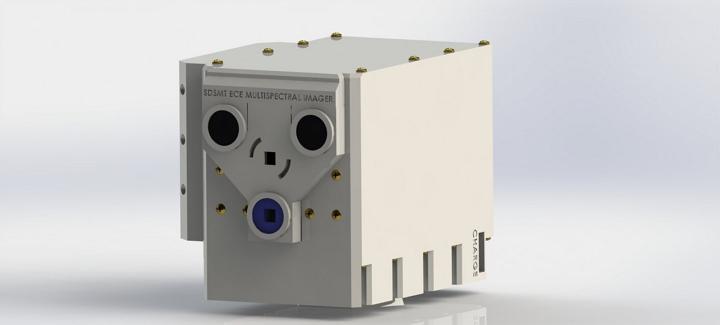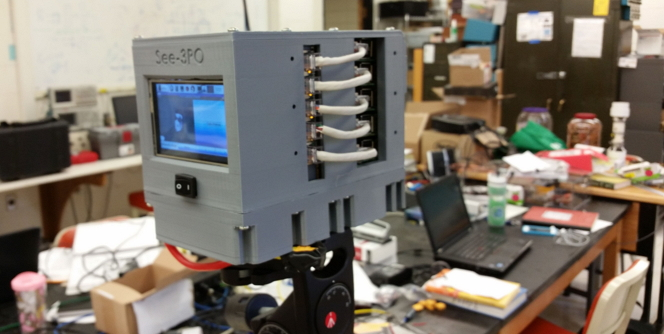
Back in 2008, Farnsworth says he received his first 3D printer – a MakerBot he named HAL9000 – and since then he’s designed and printed a variety of projects on other machines.
As an aside, he’s also built a nuclear fusion reactor in his dad’s garage with parts he ordered online. Farnsworth’s homemade reactor didn’t take home the prize an ISEF competition, but it did capture lots of attention and motivated him to continue his studies.
That’s why Farnsworth ultimately took on a challenge posed by one of his professors.
“My professor really wanted a multispectral imager and I really needed a summer project,” Farnsworth says. “This turned out to be a really interesting challenge of system engineering, programming, and electrical engineering. I 3D printed the first prototype out of an obnoxious yellow plastic. Right now, we’re working on upgrading to fit a battery system and better enclose the electronics.”
He calls it the “Swiss Army Knife of Imaging,” and he says the unit is much more capable than a standard camera. The design includes no fewer than four separate imagers, three of which can be using with various filters. The fourth of the imaging capabilities, a FLIR Lepton camera for thermal imaging, can capture various heat spectrums. Farnsworth’s device can be used for multispectral imaging and the cluster of cameras forms a synthetic aperture which allows it to “see” a target around various obstacles.
“The potential for this unit is endless and the fact that it can be 3D printed and assembled using readily available and cheap parts allows otherwise expensive technology into the hands of the layman,” Farnsworth says.
He adds that the modular system allows users to “hot swap” various components, and as the unit functions as a synthetic aperture, filters can be removed to allow it to take on three-dimensional imaging tasks.
The final design only required two iterations of the mechanical construction, and it can all be 3D printed and assembled using common bolts and a screwdriver. All the components were fabricated with a MakerBot from ABS plastic.
You can download all the parts to print your own from Thingiverse or check out detailed build documentation for the Multispectral Imager on Hackaday.
